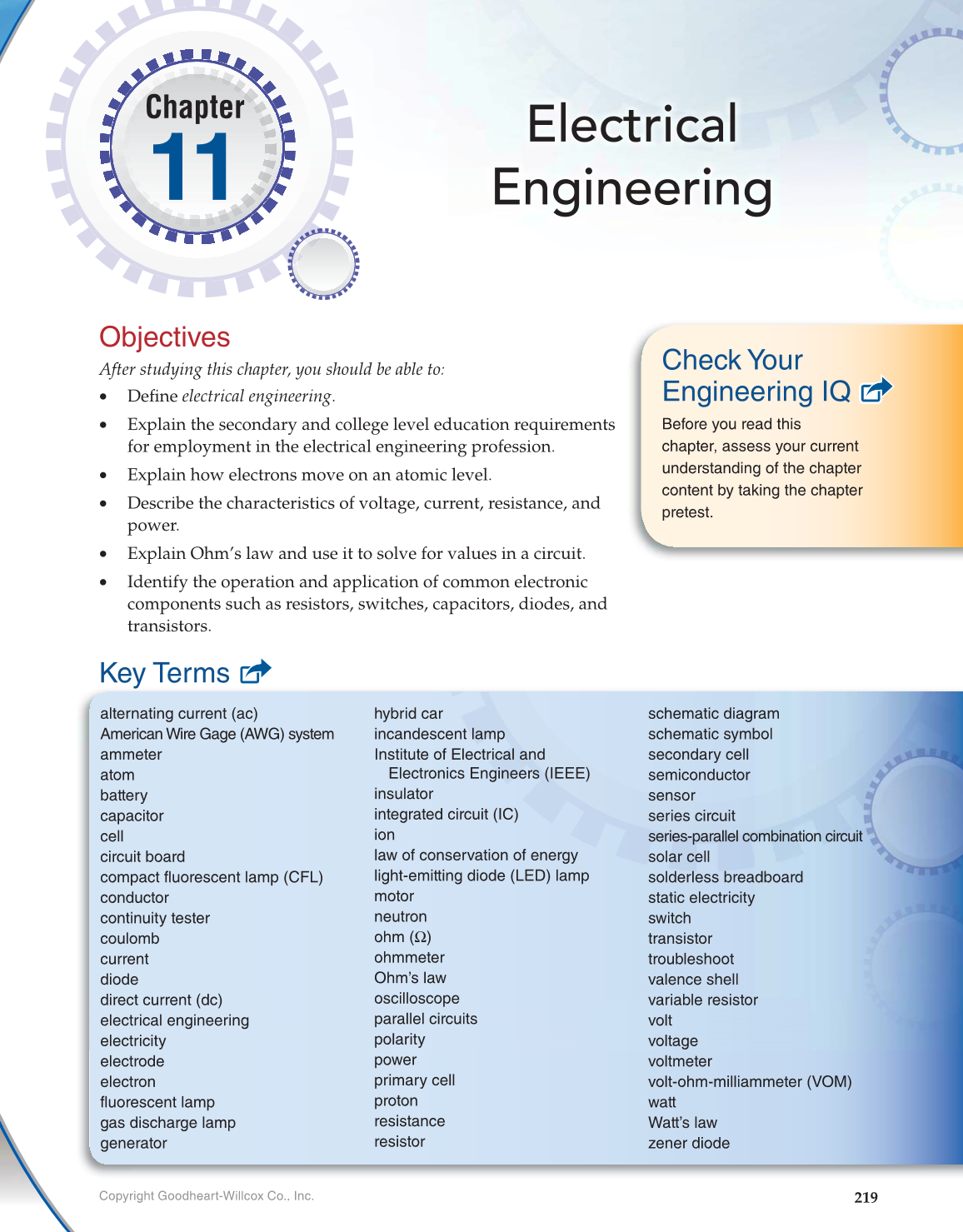219 Copyright Goodheart-Willcox Co., Inc.
Electrical
Engineering
Chapter
11
Check Your
Engineering IQ
Before you read this
chapter, assess your current
understanding of the chapter
content by taking the chapter
pretest.
Key Terms
Objectives
After studying this chapter, you should be able to:
• Defi ne electrical engineering.
• Explain the secondary and college level education requirements
for employment in the electrical engineering profession.
• Explain how electrons move on an atomic level.
• Describe the characteristics of voltage, current, resistance, and
power.
• Explain Ohm’s law and use it to solve for values in a circuit.
• Identify the operation and application of common electronic
components such as resistors, switches, capacitors, diodes, and
transistors.
alternating current (ac)
American Wire Gage (AWG) system
ammeter
atom
battery
capacitor
cell
circuit board
compact fluorescent lamp (CFL)
conductor
continuity tester
coulomb
current
diode
direct current (dc)
electrical engineering
electricity
electrode
electron
fluorescent lamp
gas discharge lamp
generator
hybrid car
incandescent lamp
Institute of Electrical and
Electronics Engineers (IEEE)
insulator
integrated circuit (IC)
ion
law of conservation of energy
light-emitting diode (LED) lamp
motor
neutron
ohm (Ω)
ohmmeter
Ohm’s law
oscilloscope
parallel circuits
polarity
power
primary cell
proton
resistance
resistor
schematic diagram
schematic symbol
secondary cell
semiconductor
sensor
series circuit
series-parallel combination circuit
solar cell
solderless breadboard
static electricity
switch
transistor
troubleshoot
valence shell
variable resistor
volt
voltage
voltmeter
volt-ohm-milliammeter (VOM)
watt
Watt’s law
zener diode
